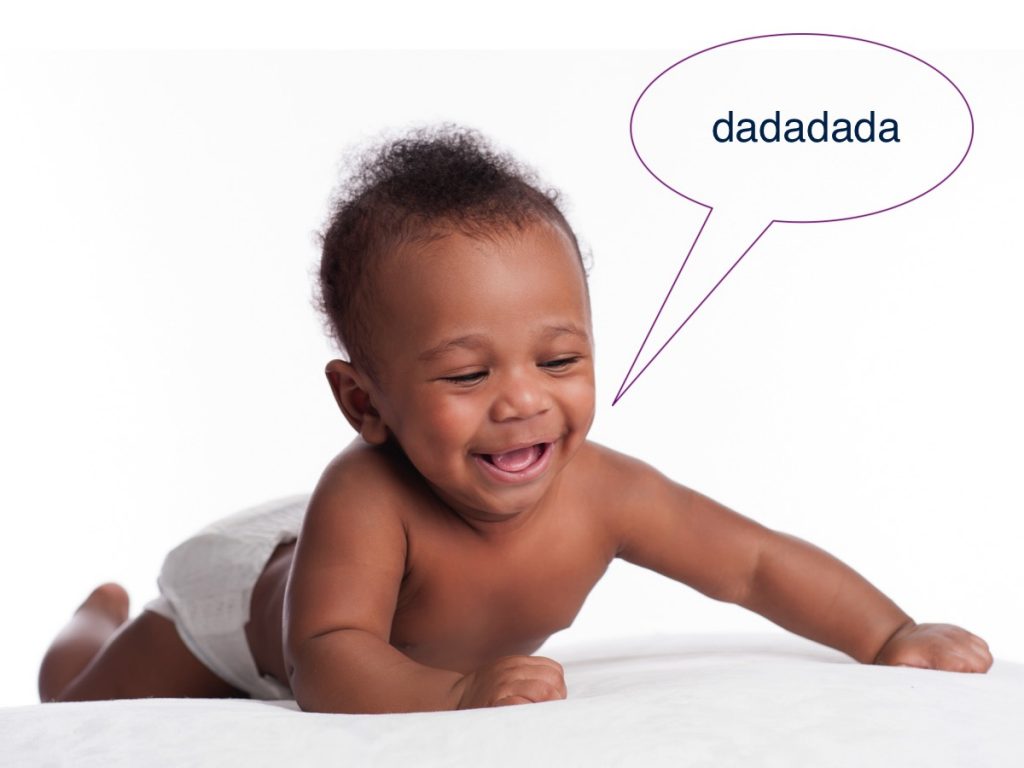
When babies are born, they cry. They can also make other non-speech sounds, such as burping and sneezing. At around 6 to 8 weeks of age, caregivers become excited to hear babies’ first coos. These coos sound like long vowels: “ahhhhh” or “ooooooh.” A couple of months later, babies begin to add consonant sounds. Sometime between 6 and 9 months of age, infants start to produce a series of consonant-vowel combinations, such as “dadadada” or “babababa.” This is known as canonical babbling. Canonical babbling consists of full syllables such as “ba,” “ma,” or “da.” Babies repeat the syllables over and over. Canonical babbling is an important predictor of later speaking abilities. For example, children who babble earlier also typically say their first words earlier.
The sounds that infants make before real words are sometimes called “vocal play.” You might think that infants are just playing with sounds. But they are actually practicing real elements of language. Babies learn how to move their mouths and tongues during vocal play. They learn to produce the same sounds they have been listening to!
Infants’ vocal play is a great opportunity for caregivers to begin a conversation. Infant-directed speech is the special, exaggerated tone of voice that sounds like a sing-song. It is also referred to as “motherese” or “parentese” because both mothers and fathers use it. In fact all caregivers use it when talking to infants and young children. Caregivers can speak to babies in this tone and use non-verbal communication cues, such as gesturing, to communicate with infants from birth. For more information on infant-directed speech please see the module “The Importance of Early Interactions.”
-
- Back-and-forth or contingent interactions
- exchanges where a caregiver times her responses to a child’s behavior
- Canonical babbling
- producing the same consonant and vowel over and over, such as dadada
- Infant-directed speech
- a special tone and style of speech used to talk to young children. It’s also called parentese
- Joint attention
- shared attention between social partners to an object or event
- Overextension
- using a word to describe more object categories than it actually represents
- Underextension
- failing to extend a word to other objects in the same category
- Vocabulary spurt
- rapid growth in word learning